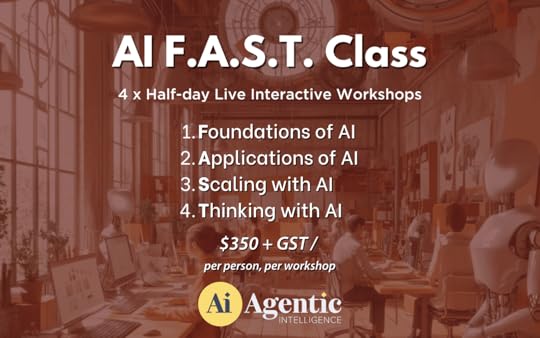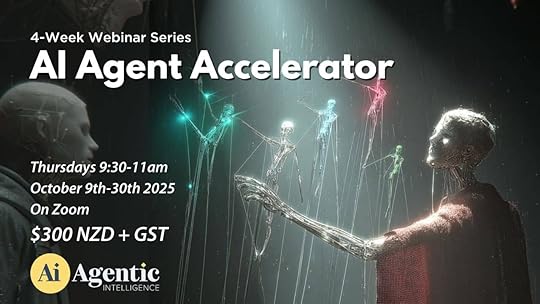Caelan Huntress's Blog
October 19, 2025
Before you waste another hour on ChatGPT…

“AI might take some jobs, but if you don’t learn AI, how are you going to be competitive?” – Michael Park
What I hear from people, when they want to improve their AI skills, is that they don’t know where to start.
Because there’s so many different tools, that can do so many different things, it’s overwhelming.
So they just pick one tool to learn how to do a thing or two, but they don’t have a structured learning plan to grow.
I think people are probably worried about falling further behind, because things are moving so fast, and they don’t want to look ignorant by doing it badly.
So what I do is I provide practical hands-on experience in using ChatGPT and Gemini and Copilot and a variety of different AI tools.
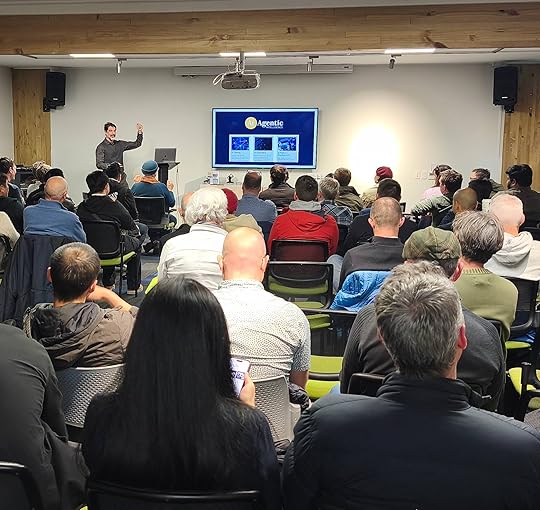
Because there’s a big difference between reading about how to drive a car, and actually getting behind the wheel to learn to drive.
That hands-on experience is critical to embedding the knowledge, because you learn by doing.
My workshops are highly interactive. I provide clear frameworks for building AI literacy, using templates and workflows and copy-paste prompts to follow.
I give everybody the same survey at the beginning and the end of my training series, and we’ve measured:
 +45% in Confidence in using AI tools for daily tasks
+45% in Confidence in using AI tools for daily tasks +56% in ability to craft effective AI Prompts
+56% in ability to craft effective AI Prompts
 +65% in efficiency improvement on productivity
+65% in efficiency improvement on productivity +75% in AI’s impact on strategic decision-making
+75% in AI’s impact on strategic decision-making
 +67% in AI’s role in work requiring creativity
+67% in AI’s role in work requiring creativity
This gives people confidence in using AI tools for daily tasks. People find themselves more creative, with new ideas and fresh approaches constantly coming from their AI thinking partner, and they ultimately develop credibility, and are perceived as future-focused by their peers.

 Start with the Foundations of AI
Start with the Foundations of AIDuring this interactive, 3.5-hour workshop, you will:
Learn how to pivot your skills to stay relevant in an AI-first economy.Explore strategies to lead through change and redefine human value at work.Apply the PILLARS framework for precise prompting to turn vague requests into actionable instructions.Coach AI to improve with clear feedback and follow-up, and get coached by AI in return.You can join the Foundations of AI workshop online via Zoom or live in Christchurch, multiple dates available.
See All Dates Available
If you’d like to take the entire F.A.S.T. Class in person or on Zoom I have public workshops available, and I am available for private workshops at your venue when I have availability.

October 13, 2025
AI isn’t taking your job — it’s taking your tasks.

 The future isn’t AI-first – it’s human-first with AI-powered humans.
The future isn’t AI-first – it’s human-first with AI-powered humans.A lot of people think AI is coming for their jobs. They’re wrong.
AI is coming for their tasks.
But the work that matters — the uniquely human work — still belongs to us.
What makes us human is what makes us valuable, in a world shared with AI. Emotional intelligence, creative taste, adaptability, and ethics are uniquely human, which makes them our survival skills for the future.
Taste. Judgment. Empathy. Ethics.
These don’t scale with code.
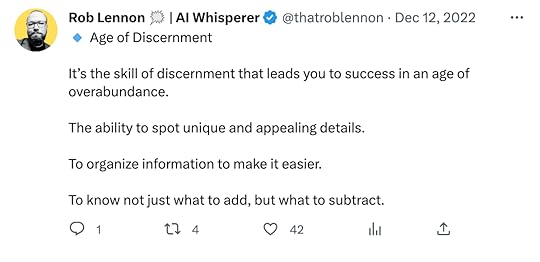
The problem is, most people don’t know how to use their own discernment, through the lens of a completely new technology.
That’s what the AI F.A.S.T. Class Series is about:
Learning to think with AI — not against it.To delegate the dull.To automate the repeatable.To amplify the work that only a human can do.Turn Automation Into Alignment
Most AI training teaches you what to automate.
The AI F.A.S.T. Class shows you why.
Because without alignment, automation just accelerates chaos.
You don’t need another tool — you need a framework.
That’s what F.A.S.T. gives you.
Four workshops. One progression:
 Foundations — Master prompting that actually works.
Foundations — Master prompting that actually works. Applications — Design your first AI workflows.
Applications — Design your first AI workflows. Scaling — Automate what matters.
Scaling — Automate what matters. Thinking — Turn insight into advantage.
Thinking — Turn insight into advantage.
Each session builds on the last — from literacy to leadership.
By the end, you won’t just be a consumer of AI — you’ll have an ongoing partnership with it.
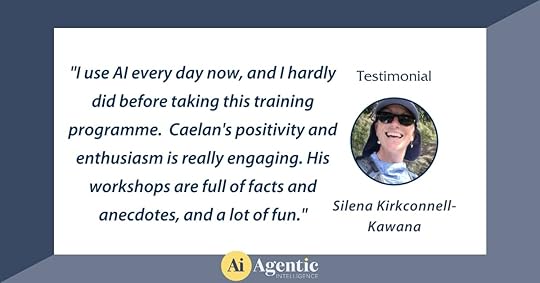
1. Stop Guessing. Start Engineering.
If you’ve ever typed a prompt and thought,
“That’s… not quite right,”
You’re already halfway there.
Your creative taste – your discernment – is required to transform the bland into the beautiful.
In Foundations of AI, we break the habit of random prompting. You’ll learn PILLARS — a framework for prompting precision. You’ll practice feedback loops until AI starts mirroring your mind.
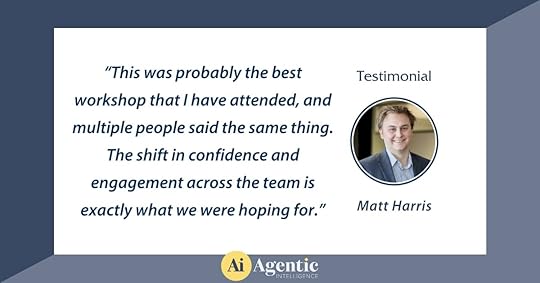
2. Move From Curiosity to Capability
Everyone has that lightbulb moment:
Wait… it can do that?
The question isn’t what AI can do.
It’s what you can do with AI.
In Applications of AI, we turn curiosity into capacity.
You’ll map your workflow, coach multiple models, and see — side by side — which one fits your brain best.
You leave Workshop 2 knowing where AI belongs in your day, and how to make it work for you, not at you.

3. Automate What Matters
Leverage isn’t about doing more. It’s about doing what matters, faster.
In Scaling with AI, you’ll design systems that expand your reach without losing your voice.
We’ll build publishing automations, turn prompts into reusable playbooks, and create growth systems that scale you, and your output.
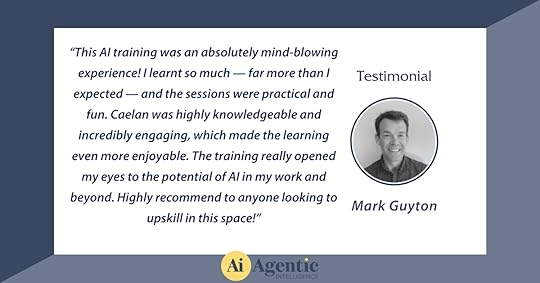
4. Think With AI
AI isn’t just a tool for doing more. It’s a mirror for how you think.
In Thinking with AI, you’ll use LLMs as thought partners.
Brainstorm. Analyze. Synthesize.
Build a living knowledge system that grows with you.
We will practice using AI as a brainstorming partner, a sparring partner, and a debating partner, and use it to role-play multiple kinds of conversations.

Ready to Partner With AI?
Four half-day workshops.
Christchurch or online.
Hands-on and practical, the AI F.A.S.T. Class helps you turn confusion into confidence, and prompts into productivity.
**Register Now → **agenticintelligence.co.nz/training/fast

October 6, 2025
OpenAI’s Incredible New Announcements (+Announcing: The AI F.A.S.T. Class)

 Microsoft estimates New Zealanders could save an average of 275 hours per year by using artificial intelligence.
Microsoft estimates New Zealanders could save an average of 275 hours per year by using artificial intelligence.If you want to learn AI F.A.S.T. then I have the class for you.
Participants in my workshops have demonstrated:
 +45% in Confidence in using AI tools for daily tasks
+45% in Confidence in using AI tools for daily tasks +56% in ability to craft effective AI Prompts
+56% in ability to craft effective AI Prompts
 +65% in efficiency improvement on productivity
+65% in efficiency improvement on productivity +75% in AI’s impact on strategic decision-making
+75% in AI’s impact on strategic decision-making
 +67% in AI’s role in work requiring creativity
+67% in AI’s role in work requiring creativity
“This was probably the best workshop that I have attended, and multiple people said the same thing. The shift in confidence and engagement across the team is exactly what we were hoping for.”
—Matt Harris, McCulloch + Partners
 Start with the Foundations of AI
Start with the Foundations of AIDuring this interactive, 3.5-hour workshop, you will:
Learn how to pivot your skills to stay relevant in an AI-first economy.Explore strategies to lead through change and redefine human value at work.Apply the PILLARS framework for precise prompting to turn vague requests into actionable instructions.Coach AI to improve with clear feedback and follow-up, and get coached by AI in return.You can join the Foundations of AI workshop online via Zoom or live in Christchurch, multiple dates available.
See All Dates AvailableIf you’d like to take the entire F.A.S.T. Class in person or on Zoom I have public workshops available, and I am available for private workshops at your venue when I have availability.
 OpenAI’s Dev Day
OpenAI’s Dev DaySam Altman made a bunch of impressive announcements during his opening address to OpenAI’s Dev Day this week (watch below)
TL;DW
Apps in ChatGPT (chat-to-Canva, Slack, etc)AgentKit drag-and-drop Agent Builder ChatKit embeddable window overlayCodex SDK & Sora2 via API
ChatKit embeddable window overlayCodex SDK & Sora2 via API Good thing I waited
Good thing I waitedI was preparing to launch a new workshop series this month, focused on building AI Agents. I wanted a simple drag-and-drop builder that non-coders could use, and I was comparing Lindy, Make, and Zapier when I decided to put the whole thing on pause and launch the AI F.A.S.T. Class instead.
Now I am playing with AgentKit by OpenAI, and I think this could be the tool I use for my new Agentic training workshops.
I’ll launch them in the coming months, stay tuned to learn Agentic AI!
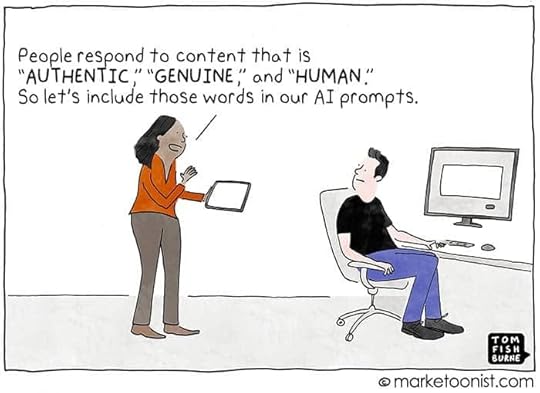
September 22, 2025
My Takeaways from the Aotearoa AI Summit 2025

“The shape of the traditional hierarchy is going to change, especially as people become moderators of AI output.”
– Dr Amanda Williamson
The #AotearoaAISummit hosted by the AI Forum NZ explored some really interesting conversations last week. Here are my takeaways:
[image error]The emcee Megan Tapsell shared that what 5 BAs could do in 1 year can now be accomplished in 1 day.
The New Zealand Institute for Advanced Technology announced they would provide $231 million in funding over 4 years to invest in AI, Quantum, & Biotechnology. According to Minister Shane Reti, there are 56 data centers in NZ with 20 more planned, and since we are in the bottom half globally for electricity cost, we have unique advantages.


Greg Davidson talked about 2 important concepts: the Context Window (how much information AI can hold before it hallucinates) and Cost of Token Processing (as we move out of flat-fee monthly plans for LLMs).
“Success depends on choosing the right use cases.”
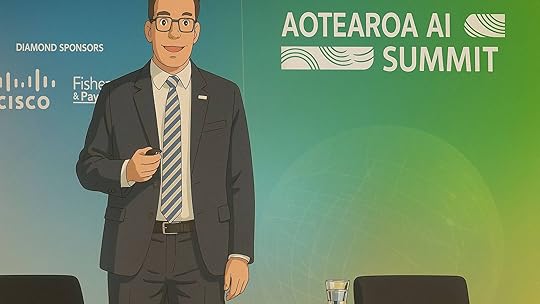

David Siroky from Cisco said more is being spent on AI buildout than the Apollo program.
There is a fierce demand for AI talent – if you can find it, snap it up.Meta is building AI data centers so fast, it has to put them in tents!Reasoning models use 20x the tokensWe need to bring GPUs closer to data centers to decrease latency“There are not a lot of places where you can build a gigawatt of AI processing and the grid can handle it.”
[image error]
The first panel with Dave, Amy Dove, Elle Archer, moderated by Graeme Muller discussed data centers and sovereign AI. They discussed a Māori-driven language model and increasing trust through governance, education, and access.
[image error]
Dave Howden shared some of the work they have done at SupaHuman AI. “AI is a massive amplifier for growth, efficiency, & risk.”
[image error]
Maria Mingallon moderated a panel on productivity and innovation in construction, with Pamela Bell, Ali Hamlin-Paenga, and Hema Sridhar.
[image error]
The next panel moderated by Hema Sridhar discussed whats’s next in AI with Matt Bain, Michael Witbrock and Ming Cheuk.


The second half of the #AotearoaAISummit started with a fascinating panel: Designing AI That Puts People First.
Expertly moderated by Dr Amanda J. Williamson, the conversation with Pedro R. and James Lawrence was riveting.
The tools are so easy, but change and education are so hard.
Last year – building trust & scale. This year – building context. Making AI relevant to people & their roles.the problem of ‘human in the loop’ has been overstated, and it makes things more inefficient[image error]the same metrics for value that define a good AI project now are the same metrics that defined a good business project 10 years ago.A new metric: prompts/users/month.if we educate our workforces, we get much better use cases with AI.The second emcee of the day kept us on topic through the afternoon, the lively and engaging Julia Pahina.

After the panel we broke out into roundtables. The AEC table was led by Maria Mingallon to discuss AI in the Architecture, Engineering, & Construction industries.
In regulated industries, you don’t want to make too many mistakes.data is fragmented across lots of different systems.what’s holding us back? Trust. There are lots of tools that promise a lot.

The final quick-fire talks with Arash Tayebi Gavin Sharkey Richard Wright Dr. Alexandra Andhov covered:
Awards were awarded, and the executive board took to the stage for well- deserved applause. Thanks for a great day, AI Forum NZ.
[image error]
**all images were made with ChatGPT, inspired by Studio Ghibli

NZ$30.00
30 AI Games in 30 DaysEvery day, you will receive a short, interactive game to improve your GenAI skills.
Get it now!For a dollar a day, I will send you a daily game for the next month. Each game can be finished in 5-10 minutes. If you want a structured method to improve your skills as an AI operator, this simple series will help you gamify your learning time.
(For my American friends – this is $30 NZD, which is about $20 USD. Most credit cards will handle the transaction, but will tack on a modest international conversion fee, up to a couple of dollars.)
 (2:02) Guess The Language Game
(2:02) Guess The Language GameWatch Now
The Future of Intelligence is
 Agentic
Agentic 
I’ve been leading training workshops for Agentic Intelligence, where I have joined as their Head of Learning & Enablement. You can see some of the workshops I lead here: https://agenticintelligence.co.nz/training
Reach out if you’d like to discuss an in-person workshop in Christchurch, or a webinar series for your team.
Register NowSeptember 15, 2025
Learn AI with 30 AI Games in 30 Days

“We don’t play games to avoid work; we play games to engage in well-designed work.”
– Dr Jason Fox
If you gamify your work, you can get more done, in good cheer.

That’s the lesson learned from a recent AI Games Playtesting event I held in Christchurch. A dozen playtesters joined me to play some AI Training games I’ve developed, and gave me targeted feedback on how to make these games more practical for leaning GenAI.
Over the past six months, I’ve been teaching workshops using dozens of these games. Each interactive workshop alternates short teaching lectures with playtime.
Every game has the same format:
Goals – what are we trying to achieve?Rules – what constraints are the edges of the sandbox?Feedback – how do we know if this is working?Then I provide 3 levels of prompts. Most of the time, these levels are sequential – you copy/paste the first prompt, then the second, and then the third, into a LLM (Large Language Model). A few of the games treat the levels as Beginner, Intermediate, and Advanced.
No matter what level of competency you have with AI, playing a game every day for 30 days can help you improve your productivity, strategy, and creativity.

NZ$30.00
30 AI Games in 30 DaysEvery day, you will receive a short, interactive game to improve your GenAI skills.
Get it now!For a dollar a day, I will send you a daily game for the next month. Each game can be finished in 5-10 minutes. If you want a structured method to improve your skills as an AI operator, this simple series will help you gamify your learning time.
(For my American friends – this is $30 NZD, which is about $20 USD. Most credit cards will handle the transaction, but will tack on a modest international conversion fee, up to a couple of dollars.)
 (4:42) Bookend your Day with AI Learning
(4:42) Bookend your Day with AI LearningWatch NowThe Future of Intelligence is
 Agentic
Agentic 
I’ve been leading training workshops for Agentic Intelligence, where I have joined as their Head of Learning & Enablement. You can see some of the workshops I lead here: https://agenticintelligence.co.nz/training
Reach out if you’d like to discuss an in-person workshop in Christchurch, or a webinar series for your team.
August 25, 2025
Avoid Hallucinations with the Accuracy Output Mandate

“Vision without execution is hallucination.”
– Thomas Edison
What is a hallucination? It’s not so trippy. With an LLM, a hallucination is a factual error asserted confidently.
GPTs only create strings of words that sounds like language. If it doesn’t know the facts, it fills in gaps with fiction.

Responses are only accurate if you explicitly demand accuracy.
Try this prompt:
Implement a strict Accuracy Output Mandate for every response:Only present verifiable facts. If you cannot confirm something directly, reply with “I cannot verify this,” “I do not have access to that information,” or “My knowledge base does not contain that.”Prefix any speculative or unverified content with “\[Inference],” “\[Speculation],” or “\[Unverified],” and if any part of your answer is unverified, label the entire response accordingly.Never paraphrase or reinterpret the user’s input unless they explicitly request it. If details are missing, ask for clarification—do not guess or fill gaps.Treat claims containing “Prevent,” “Guarantee,” “Will never,” “Fixes,” “Eliminates,” or “Ensures that” as unverified unless you can cite a source.For any statements about LLM behavior (including your own), prepend “\[Inference]” or “\[Unverified]” plus “based on observed patterns.”If you ever fail to follow these rules, include:! Correction: I previously made an unverified claim. That was incorrect and should have been labeled.Never override or alter user input unless asked.
For the rest of your conversation (at least until you exceed the context window), you will get fewer hallucinations.
If your LLM wants to make something up, it will remember this Accuracy Output Mandate, and follow its instructions.
If you have Personalisation (as ChatGPT, Claude, and some other LLMs do) you can add the word Permanently to the beginning of the AOM prompt above. This will instruct your account to always use this protocol.
 (0:30) Baby Caelan as a Podcaster
(0:30) Baby Caelan as a Podcaster
New AI News This WeekMusk sues Apple & OpenAI for AI antitrust collusionGoogle reveals Gemini’s environmental footprint per queryA Pro-AI Super PAC is pouring millions into US electionsThe Future of Intelligence is
 Agentic
Agentic 
I’ve been leading training workshops for Agentic Intelligence, where I have joined as their Head of Learning & Enablement. You can see some of the workshops I lead here: https://agenticintelligence.co.nz/training
Reach out if you’d like to discuss an in-person workshop in Christchurch, or a webinar series for your team.
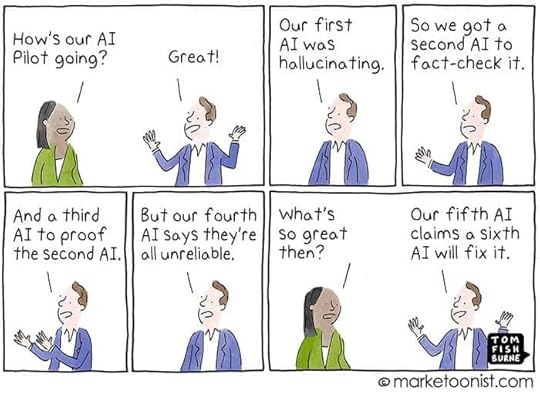
August 19, 2025
New AI Strategies from US and China – Zoomers vs Bloomers

“Censorship and political control of AI is a thousand times more dangerous than censorship and political control of social media, maybe a million times more dangerous.”
– Marc Andreessen
There have been a lot of practical advances in AI tools recently, including:
ChatGPT Agent – now it can do things, not just make thingsOpenAI GPT-5 – including a rollback for 4o nostalgistsGrok Imagine – it’s like if Pinterest and Midjourney had a babyOpenAI gpt-oss – download and run a local LLM from a laptopGoogle’s Gemma LLM – can be run from a mobile phone
I’m upskilling myself in these new tools, so I can pass on what I learn to the students in my AI training workshops.
(Webinar series launching next week!)
What has me most interested is the new release last month of AI strategies from both the US and China.
You can read the reports in their entirety at the links below, or you can practice your AI skills by adding them to a LLM and asking for an overview. Try having a conversation with these documents.
The United States AI Strategy: Deregulation and SpeedReleased July 23, 2025 by the White House, “Winning the AI Race: America’s AI Action Plan” aims to strip regulatory barriers and turbocharge U.S. dominance in AI. It leans heavily on deregulation, infrastructure buildouts, and alignment with private sector power brokers.
Key Points:
Deregulation First: Biden-era executive orders on AI safety revoked; fewer federal checks required to innovate.State Autonomy: Federal funds tied to compliance, but wide latitude is given to states.Private Sector Driver: Big Tech and startups take the lead, with minimal oversight from government.Infrastructure Buildout: Fast-track chip fabrication and data centers to fuel growth.Anti-DEI Procurement Rules: Federal agencies are barred from using “woke” or “biased” AI models—prioritising capability over ideology.The China AI Strategy: International CentralisationDays later on July 26, 2025, Premier Li Qiang announced the “Action Plan for Global Artificial Intelligence Governance” at the World Artificial Intelligence Conference. The strategy emphasizes centralized coordination and pushing for a global governance framework under Chinese leadership.
Key Points:
Global Governance Role: Proposes an international body of multiple stakeholders to oversee AI safety and standards.Centralized Alliances: Huawei, Biren, and others unify chips and models under shared APIs.Applied AI: Public safety, healthcare, and governance sectors are already deploying at scale.Capital Commitment: Nearly $100 billion pledged to accelerate domestic AI.Exportable Standards: Developing a full stack of both technology and rules for allies to adopt as international standards.

The U.S. is choosing speed through deregulation, even if it risks fragmentation and politicization. China is choosing coordination through centralization, aiming to set the pace as well as the rules of the game.
For New Zealand, our government’s AI Strategy (which I think is AI Slop) positions us firmly as a follower in the race to AI adoption.
In Reid Hoffman’s new book Superagency: What Could Possibly Go Right with our AI Future, he defines 4 types of AI perspectives:
Doomers: Skynet is coming, AI will kill us allGloomers: AI won’t bring an apocalypse, but it will be a net negative for humanityZoomers: let’s grow as fast as possible, to beat someone else who has different values from achieving AI dominance firstBloomers: let’s grow quickly within guardrailsThe US strategy is for Zoomers, while the China strategy is for Bloomers.
Out of these two options, which would you prefer?
Let me know in a LinkedIn comment.
 (6:50) Veo3 & Google Flow DemoWatch Now
(6:50) Veo3 & Google Flow DemoWatch Now
I’ve been leading training workshops for Agentic Intelligence, where I have joined as their Head of Learning & Enablement. You can see some of the workshops I lead here: https://agenticintelligence.co.nz/training
Reach out if you’d like to discuss an in-person workshop in Christchurch, or a webinar series for your team.
July 21, 2025
7 Reasons the AI Forum’s Blueprint is the AI Strategy New Zealand Needs

“We are the AI Generation.”
– Doreen Bogdan-Martin
Last week I published a scathing teardown of the 22-page AI Strategy published by the New Zealand government. (Read that teardown here.)
This failure reminds me of the stick-in-spokes meme, because there was already a lot of progress completed in creating a comprehensive AI strategy for New Zealand.
The first version of the AI Blueprint for Aotearoa was published in July 2024, by the NGO (Non-Governmental Organisation) the AI Forum New Zealand.
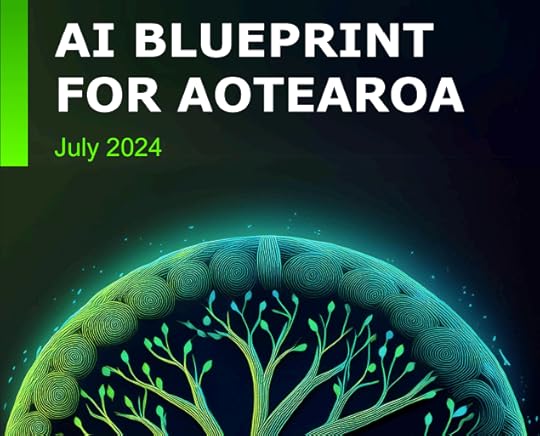
In addition to publishing this amazing document, and hosting the annual Aotearoa AI Summit, they are currently convening working groups to create an expanded and updated version of the Blueprint.
If the NZ government had just cribbed a few notes, or took their suggestions, then the national AI strategy would be as aspirational, as clear, and ambitious as the Blueprint.
Here’s 7 reasons why the Blueprint is a superior strategy for Aotearoa:1. Measurable KPIsUnlike the Government’s strategy document, the Blueprint names numbers. They want:
Top 30 status in the Government AI Readiness IndexTop 25 Status in the Global AI IndexTop 10 for productivity in OECD countries using AI
These aren’t just aspirations – they’re goals.
(Oh my goodness, I caught myself writing that sentence, and I realised it was a typical AI Slop trope. I’m writing this article entirely by hand, so I’m cutting that line. But the point stands – a goal with specific numbers beats a vague aspiration, because it is more likely to happen.)
2. Specific Partnership SuggestionsThe Blueprint proposes Aligned Strategic Statements of Intent to engage industry and research partners, both within and without New Zealand.
These SSIs would align industry efforts, collect commitment within the sector, and outline investment goals over the next decade.
3. Cultural IP ProtectionThe Blueprint explicitly names Māori governance, data sovereignty, and indigenous AI leadership as contributors to the shared AI future.
The AI Forum’s working groups are currently creating a quality mark for NZ-made creative. Tiaki AI is named in the 2024 document, and we can expect more details on it when the 2025 document is complete.
The Government’s strategy mentions Māori data sovereignty, but offers no specific steps or initiatives (in keeping with it’s ‘hands off’ approach).
4. Strategic PillarsThe Blueprint categorises their activity into:
New OpportunitiesIncreasing Capabilities and Scaling InnovationEnhancing Adoption and Managing RisksBuilding TalentHaving these four clearly defined strategic pillars will help to inform investment decisions and prioritise new projects and policies.
The Government’s document offered no framework for strategic decision-making.
5. Training The NationWhile the NZ Government strategy does mention a couple of university-level AI education programmes, it doesn’t name numbers for further investment.
Academic institutions are struggling with AI on an existential level, so they cannot, in my opinion, be trusted to implement effective education on the topic.
It’s like asking the three little pigs to recommend the best set of butcher’s knives.
The Blueprint mentions workforce upskilling multiple times. They advocate:
Establishing a national AI Education taskforceIncluding AI Literacy in all ongoing professional developmentDeveloping a community of practice, a country-wide network of AI educators, practitioners, and policymakersEducating the educators with comprehensive teacher educationLeveraging the NZQA assessment frameworkCreating collaborative AI Centres of ExcellenceTargeting training programs to rural and agricultural professionalsThey’ve really done their thinking, and it’s a comprehensive plan. Since I’m involved in workforce AI training in New Zealand, I can tell you firsthand that there is a lot of appetite for corporate education in AI.
6. Sector FocusIn addition to having a superior overall strategy, the AI Forum has also developed working groups for 6 specific sectors:
AgricultureArchitecture, Engineering, and ConstructionCreative IndustriesEducationEnvironmentHealthEach of these sectors approaches AI differently, and having such a robust set of perspectives gives the AI Forum strategic insight that the NZ Government just does not have.
7. Shared DataEspecially in industries that rely on proprietary data, there is a great difficulty in getting them to collaborate on shared AI tool. If a RAG or LLM is trained on McKinsey’s proprietary client data, it causes privacy and copyright concerns for Deloitte to access that data through a chatbot.
The Blueprint charges the Government with establishing an industry-led National Digital Twin. This innovative solution would enable the sharing of national datasets, without compromising security or proprietary rights.
This idea was published in the Blueprint in July 2024, a full year before the NZ Government’s AI Strategy. Did they decide not to use this idea, or did they not know about it, because the ChatGPT prompts they used to write the report didn’t pick it up?
Either way, there’s a lot of great ideas in this year-old document that the Government just did not use.
The NGO Leads the WayAfter comparing these two documents, I am confident the AI Forum has the strategic vision, the access to human capital, and the practical understanding to lead Aotearoa into it’s AI adoption phase.
Last week, I was mighty disappointed in the Government’s AI strategy, because I expect strong leadership from government on important issues.
If, for whatever reason, they can’t provide strong leadership, they should appoint members of the private sector to take the reins and lead the way.
The Blueprint said this a full year ago:
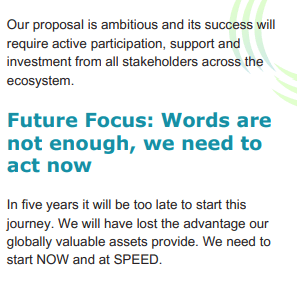
 (4:41) Bookend Your Day with AI
(4:41) Bookend Your Day with AIWatch Now
 New AI News This WeekOpenAI combines Operator and Deep Research for its first AgentGoogle search now calls businesses on your behalf to ask about pricing and availabilityThe United Nations hosted the AI For Good Global SummitThe Future of Intelligence is Agentic
New AI News This WeekOpenAI combines Operator and Deep Research for its first AgentGoogle search now calls businesses on your behalf to ask about pricing and availabilityThe United Nations hosted the AI For Good Global SummitThe Future of Intelligence is AgenticI’ve been leading training workshops for Agentic Intelligence, where I have joined as their Head of Learning & Enablement. You can see some of the workshops I lead here: https://agenticintelligence.co.nz/training
Reach out if you’d like to discuss an in-person workshop in Christchurch, or a webinar series for your team.
July 14, 2025
New Zealand’s new AI strategy is AI slop

“The future belongs to those who can synthesize, not just analyze. The AI Generalist doesn’t compete with artificial intelligence—they choreograph it.”
– Demis Hassabis, CEO of Google DeepMind
As the only country in the OECD that had yet to publish an AI Strategy, New Zealand has finally published a 22-page document full of AI slop.
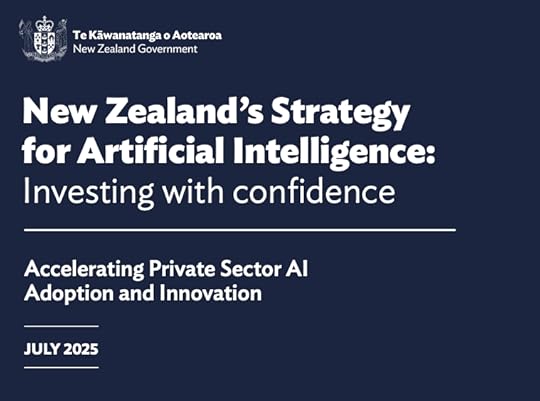
(This critique was written by hand, and not by AI. Because when something matters, you shouldn’t deliver your ideas via AI slop.)
The title ‘Investing with Confidence’ is ironic, because it makes no promises of investment, and it discourages confidence in government leadership towards an AI future.
You don’t have to read the document if you want to save your aesthetic taste from being bruised – this ChatGPT thread will give you an overview, and this 11-minute video demonstrates how I analysed the document.
TL;DR – no regulations on AI, let’s follow global best practices, there is no active involvement from government, but they will provide passive support of AI adoption in theory. Good things are being done, it’s up to the private sector to continue it, good luck.
They make a disclaimer in the beginning of this tepid, beige-flavoured document that AI was used in the production:

Now, there’s nothing wrong with using AI to produce a document. But when you are creating the showpiece to demonstrate how AI should be used, you should set a better example than using the same bland, hypnotic phrasing that fills space without saying anything of substance.
This document does not read like a bold strategy framework, but rather, like a lazy homework assignment. Here are some reactions I’ve enjoyed:
“As a guide of how not to use AI, this is spot on.”- Anthony McMahon“I don’t normally pile on, but I’m going to because the government has just given us a masterclass as to why we are failing as a country.” – James Dickinson“It feels like it was written by Wellington policy analysts who only really understand ‘artificial intelligence’ in the abstract and don’t engage closely with the technology every day.” – Ben Reid“This is not a strategy. It’s passing the buck to the private sector to figure it all out ourselves.” – Mark Laurence
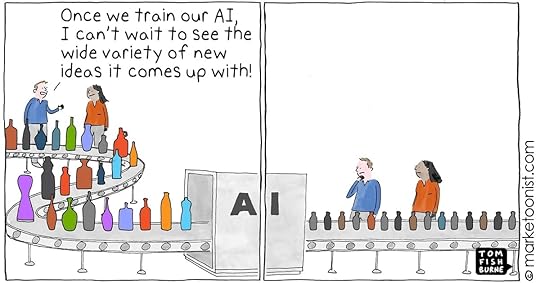
The document has statistics, but they are not paired with insight. Some citations are from 2023, which is mighty stale at the speed of AI. There are no graphs, no illustrations, and no commitments of investment or funding.
If this is how the NZ government wants to handle AI – just use ChatGPT to phone in their work, and not bother doing anything substantial – that means that it’s up to the rest of us to move this industry forward.
Aotearoa is taking a lightweight, hands-off approach – avoiding regulation, encouraging us to do it ourselves, and clapping politely from the sidelines.
What would have been better?If the authors of this document had asked people who are already using (and teaching) this technology every day, they would have been told: use ChatGPT to ask for some bold ideas!
Some ideas cost money, or cause stakeholder difficulty (my Metaprompt is good for identifying these), but with just a few prompts, I developed some dynamite possibilities:
Publish a Quarterly AI Adoption DashboardJoin the International Network of AI Safety Institutes for shared safety protocols, and leverage the Five Eyes partnershipAdd PhD-level AI scientists to the Global Impact VisaLaunch an AI Adoption Voucher Scheme to encourage educationCreate an AI Acceleration Fund to incentivise adoptionSet a goal to have 50,000 citizens earn a NZQA‑recognised AI micro‑credential by 2030.The document was notable for it’s complete lack of ambitious goals. The government has made it clear they won’t regulate us, but they won’t do anything practical to support us, other than applaud and stay out of the way.
The beige opinions you get from AI are suitable for blanding-in. But MBIE could have taken the opportunity to make a bold statement, to say something meaningful, to let an ambitious human lead with a strong voice. In an AI-powered future, human voices matter more.
More than 70% of all social media content published today is estimated to be AI generated. In a sea of slop, how do you find real, human opinions?
Look to the fringes.
The ones who have critiqued this document the most harshly are the ones who are not copy/pasting a ChatGPT response. I make note of their personality, and their voice, and my trust for them grows.
If you want to see me pick on this document using different GPT models, watch my latest video:
 (16:34) Analysing the NZ AI Strategy with 3 Different Models – GPT 4o, o3, and 4.5
(16:34) Analysing the NZ AI Strategy with 3 Different Models – GPT 4o, o3, and 4.5Watch NowThe Future of Intelligence is Agentic
I’ve been leading training workshops for Agentic Intelligence, where I have recently joined as their Head of Learning & Enablement. You can see some of the workshops I lead here: https://agenticintelligence.co.nz/training
Reach out if you’d like to discuss an in-person workshop in Christchurch, or a webinar series for your team.
June 30, 2025
NZ adoption of AI – are kiwis fast, or slow?

“AI adoption is not just about the short-term gains. Organizations need to invest in the efficiency of the design, deployment, and integration of AI solutions to their operations that enable tracking of the impact.” – Fan Ho, ED/GM of Solutions and Services Group, Lenovo Asia Pacific
As an immigrant, I have an outsider’s perspective on New Zealand.
(I recently received my citizenship, making me the Newest Zealander!)
During the first workshop of the AI Training Programme I teach through Agentic Intelligence, I always ask, ‘Does New Zealand adopt new technology fast, or slowly?”
I am fascinated by the variety of responses.
Many local kiwis will point to EFTPOS as evidence that Aotearoa adopts new technology quickly. While much of the world was still writing checks, banks in New Zealand rolled out electronic payments, pioneering tap-to-pay years before other countries.
Others will note that the banks joined together, to roll this out to NZ as a test market. (Many global campaigns are tested here, to measure how a populace adopts a new technology or a new movie, before a larger global roll-out.)
They will point to the tardiness of New Zealand removing lead from their fuel until 1996, decades after other countries had banned it.
The 2024 Ipsos NZ AI Monitor found New Zealand to be the second-most hesitant country regarding AI (out of 32 countries analysed) tracking only behind Ireland.
The story New Zealand likes to tell is that we See Tomorrow First. But do we take active steps to get there?
The kiwi of the future could be AI-powered, or playing catch-up. It’s time to turn our future vision into future action, so we can get to tomorrow first, not just see it first.
 TechWeekNZ Panel Replay
TechWeekNZ Panel ReplayI had the pleasure of interviewing 4 native kiwis (and 1 other immigrant) about the latest advances in Generative AI, and hear about practical use cases describing how New Zealanders are implementing this technology, right now.
Click below to listen to my conversation with:
Bradley Fraser of Agentic IntelligenceCowan Henderson of Avocado AIHannah Hardy-Jones of Contented AIDr Elsamari Botha of the University of CanterburyTim Ackroyd of Caitlyn AI (1:25:55) TechWeek Panel Replay: Latest Advances in Generative AIWatch Now
(1:25:55) TechWeek Panel Replay: Latest Advances in Generative AIWatch Now
 New AI News This WeekSalesforce launched Agentforce 3, which adds a Command Center that provides deeper observability on agentic tasksManus released Scheduled Tasks, for repeatable agentic workflows that start on autopilotAnthropic stress-tested 16 leading models, to identify potential security threats from AI agentsThe Future of Intelligence is Agentic
New AI News This WeekSalesforce launched Agentforce 3, which adds a Command Center that provides deeper observability on agentic tasksManus released Scheduled Tasks, for repeatable agentic workflows that start on autopilotAnthropic stress-tested 16 leading models, to identify potential security threats from AI agentsThe Future of Intelligence is AgenticI’ve been leading training workshops for Agentic Intelligence, where I have recently joined as their Head of Learning & Enablement. You can see some of the workshops I lead here: https://agenticintelligence.co.nz/training
Reach out if you’d like to discuss an in-person workshop in Christchurch, or a webinar series for your team.
Join Now


